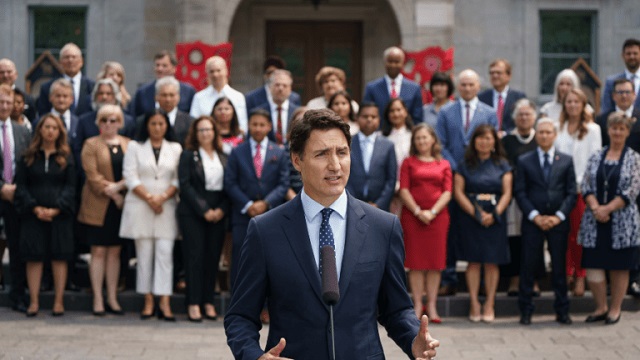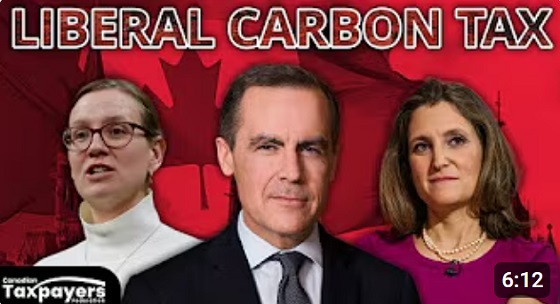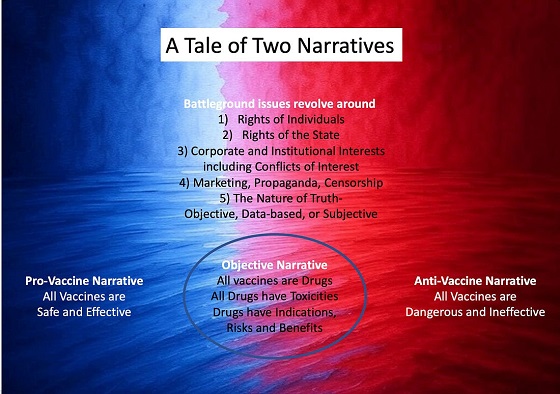Business
Trudeau reversed Chrétien’s legacy and rapidly expanded federal bureaucracy

From the Fraser Institute
Over the next weeks and months, there will be much discussion about Justin Trudeau’s legacy as prime minister. To provide some context, it’s worth comparing Trudeau’s fiscal record with that of another long-serving Liberal prime minister—Jean Chrétien.
In the early 1990s Canada’s federal finances were in shambles. Thanks to years of large budget deficits (and high interest rates), debt interest payments were consuming one-third of all federal revenue and the country stood at the brink of a full-blown fiscal crisis. Paul Martin, Chrétien’s finance minister, recognized the gravity of the threat and famously promised to eliminate the deficit “come hell or high water.” And that’s exactly what the Chrétien government did, thanks primarily to reductions in federal spending.
How’d they do it?
The government launched a program review, which examined all dimensions of spending in search of savings. The review led to a substantial reduction in federal government employment, which shrunk by nearly 15 per cent. While there were many components to the federal reforms of the 1990s, this reduction in the size of the federal bureaucracy clearly helped Chrétien and Martin eliminate the federal deficit.
Fast-forward to the present day and Justin Trudeau, who does not share his Liberal predecessors’ commitment to balanced budgets. Federal government employment has increased rapidly in recent years, with the Trudeau government adding more bureaucrats (in absolute and percentage terms) than were reduced during the Chrétien/Martin reform era.
Specifically, from 2015/16 to 2022/23, federal government employment (as measured in fulltime equivalents) increased by 26.1 per cent. By comparison, the Canadian population increased by 9.1 per cent over the same period.
Just as the reduction in federal employment contributed to the deficit reduction in the 1990s, the growth in federal employment has helped fuel the Trudeau government’s unending string of budget deficits since 2015/16. Incidentally, if during its nine years in power the Trudeau government had simply held the rate of growth in federal employment to the rate of population growth, federal spending would be $7.5 billion lower than it is today.
According to the Trudeau government’s latest projections, the federal deficit will reach an eye-popping $48.3 billion this fiscal year. And thanks to years of record-high spending under Trudeau, total federal debt will eclipse $2.15 trillion. Consequently, the federal government will spend $53.7 billion this year on debt interest payments—or $1,301 per Canadian.
Canadian history is clear—it’s difficult to predict the policy orientation of any premier or prime minister based on their political stripe. Prime Ministers Chrétien and Trudeau prove this point. Chrétien reduced federal employment with an eye on eliminating the federal deficit. Trudeau reversed this legacy by rapidly growing the federal bureaucracy. This is one important reason for the divergent fiscal outcomes between the two governments.
Under Prime Minister Chrétien, Canadians saw a string of balanced budgets. Under Prime Minister Trudeau, an unending series of deficits and massive debt accumulation, which Canadians must pay for today and for many years to come.
2025 Federal Election
MEI-Ipsos poll: 56 per cent of Canadians support increasing access to non-governmental healthcare providers

-
Most believe private providers can deliver services faster than government-run hospitals
-
77 per cent of Canadians say their provincial healthcare system is too bureaucratic
Canadians are increasingly in favour of breaking the government monopoly over health care by opening the door to independent providers and cross-border treatments, an MEI-Ipsos poll has revealed.
“Canadians from coast to coast are signalling they want to see more involvement from independent health providers in our health system,” explains Emmanuelle B. Faubert, economist at the MEI. “They understand that universal access doesn’t mean government-run, and that consistent failures to deliver timely care in government hospitals are a feature of the current system.”
Support for independent health care is on the rise, with 56 per cent of respondents in favour of allowing patients to access services provided by independent health entrepreneurs. Only 25 per cent oppose this.
In Quebec, support is especially strong, with 68 per cent endorsing this change.
Favourable views of accessing care through a mixed system are widespread, with three quarters of respondents stating that private entrepreneurs can deliver healthcare services faster than hospitals managed by the government. This is up four percentage points from last year.
Countries like Sweden and France combine universal coverage with independent providers and deliver faster, more accessible care. When informed about how these health systems run, nearly two in three Canadians favour adopting such models.
The poll also finds that 73 per cent of Canadians support allowing patients to receive treatment abroad with provincial coverage, which could help reduce long wait times at home.
Common in the European Union, this “cross-border directive” enabled 450,000 patients to access elective surgeries in 2022, with costs reimbursed as if they had been treated in their home country.
There’s a growing consensus that provincial healthcare systems are overly bureaucratic, with the strongest agreement in Alberta, B.C., and Quebec. The proportion of Canadians holding this view has risen by 16 percentage points since 2020.
Nor do Canadians see more spending as being a solution: over half say the current pace of healthcare spending in their province is unsustainable.
“Governments shouldn’t keep doubling down on what isn’t working. Instead, they should look at what works abroad,” says Ms. Faubert. “Canadians have made it clear they want to shift gears; now it’s up to policymakers to show they’re listening.”
A sample of 1,164 Canadians aged 18 and older was polled between March 24th and March 28th, 2025. The margin of error is ±3.3 percentage points, 19 times out of 20.
The results of the MEI-Ipsos poll are available here.
* * *
The MEI is an independent public policy think tank with offices in Montreal, Ottawa, and Calgary. Through its publications, media appearances, and advisory services to policymakers, the MEI stimulates public policy debate and reforms based on sound economics and entrepreneurship.
2025 Federal Election
POLL: Canadians say industrial carbon tax makes life more expensive

The Canadian Taxpayers Federation released Leger polling showing 70 per cent of Canadians believe businesses pass on most or some of the cost of the industrial carbon tax to consumers. Meanwhile, just nine per cent believe businesses pay most of the cost.
“The poll shows Canadians understand that a carbon tax on business is a carbon tax on Canadians that makes life more expensive,” said Franco Terrazzano, CTF Federal Director. “Only nine per cent of Canadians believe Liberal Leader Mark Carney’s claim that businesses will pay most of the cost of his carbon tax.
“Canadians have a simple question for Carney: How much will your carbon tax cost?”
The federal government currently imposes an industrial carbon tax on oil and gas, steel and fertilizer businesses, among others.
Carney said he would “improve and tighten” the industrial carbon tax and extend the “framework to 2035.” Carney also said that by “changing the carbon tax … We are making the large companies pay for everybody.”
The Leger poll asked Canadians who they think ultimately pays the industrial carbon tax. Results of the poll show:
- 44 per cent say most of the cost is passed on to consumers
- 26 per cent say some of the cost is passed on to consumers
- 9 per cent say businesses pay most of the cost
- 21 per cent don’t know
Among those decided on the issue, 89 per cent of Canadians say businesses pass on most or some of the cost to consumers.
“Carbon taxes on refineries make gas more expensive, carbon taxes on utilities make home heating more expensive and carbon taxes on fertilizer plants increase costs for farmers and that makes groceries more expensive,” Terrazzano said. “A carbon tax on business will push our entrepreneurs to cut production in Canada and increase production south of the border and that means higher prices and fewer jobs for Canadians.”
-

 Alberta2 days ago
Alberta2 days agoMade in Alberta! Province makes it easier to support local products with Buy Local program
-

 2025 Federal Election2 days ago
2025 Federal Election2 days agoCSIS Warned Beijing Would Brand Conservatives as Trumpian. Now Carney’s Campaign Is Doing It.
-

 2025 Federal Election2 days ago
2025 Federal Election2 days agoInside Buttongate: How the Liberal Swamp Tried to Smear the Conservative Movement — and Got Exposed
-

 Bruce Dowbiggin1 day ago
Bruce Dowbiggin1 day agoIs HNIC Ready For The Winnipeg Jets To Be Canada’s Heroes?
-

 Dr. Robert Malone1 day ago
Dr. Robert Malone1 day agoThe West Texas Measles Outbreak as a Societal and Political Mirror
-

 COVID-191 day ago
COVID-191 day agoCOVID virus, vaccines are driving explosion in cancer, billionaire scientist tells Tucker Carlson
-

 Health1 day ago
Health1 day agoHorrific and Deadly Effects of Antidepressants
-

 illegal immigration1 day ago
illegal immigration1 day agoDespite court rulings, the Trump Administration shows no interest in helping Abrego Garcia return to the U.S.









